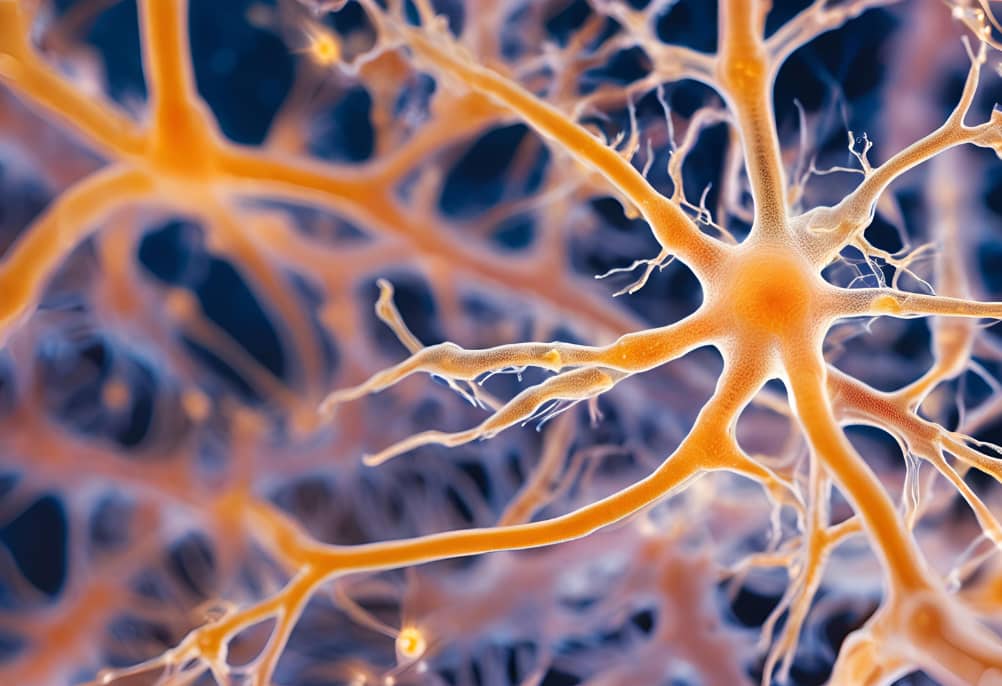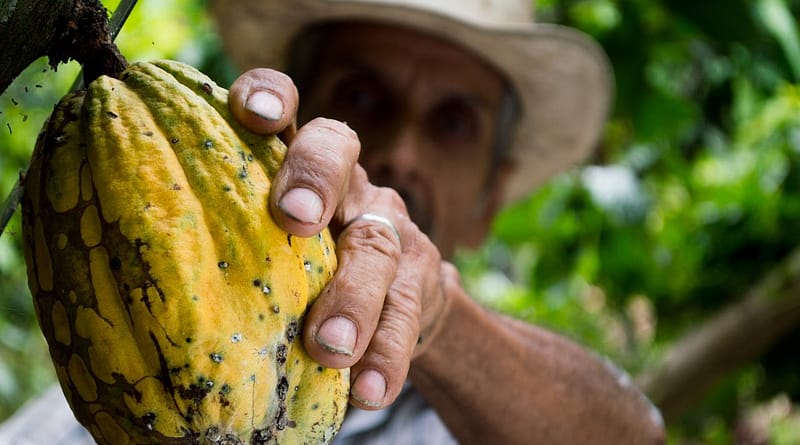7 Health Benefits of Cocoa You Need to Know
Cocoa, the main ingredient in chocolate, is more than just a delicious treat. This ancient superfood has been revered for centuries, and modern science is now confirming its numerous health benefits. Keep scrolling to find out more! Skip intro
Table of Contents
Cocoa: A Timeless Superfood
The history of cocoa stretches back millennia, with ancient civilisations recognising its value long before modern science.
The Mayans documented chocolate’s health benefits as far back as 2000 BCE. They even had a cocoa god, Ek Chuah, whom they celebrated annually.
Packed with powerful compounds, cocoa is just one of many nutrient-dense superfoods that support overall health.

Fast forward a few centuries, and Montezuma II, the ninth Aztec Emperor, was known to drink cocoa beverages to boost his libido before meeting his numerous wives.[1]
Which is no surprise, considering cocoa contains phenylethylamine, often referred to as the “love molecule” or “chocolate amphetamine”.[2]

Besides its mood-enhancing effect and rich nutritional profile (Table I.), cocoa’s true health-boosting power lies in its flavanol content.[3]
Flavanols are protective compounds found in plants, widely known for their antioxidant properties.
Conveniently, cocoa happens to have one the highest antioxidant concentrations (Table II.) amongst currently consumed plants, fruits, and beans.[4]

Now that’s a superfood!
You can achieve these benefits by consuming dark chocolate, or cocoa powder, cocoa nibs, and cocoa flavanols (affiliate links)—for the more nutrient-dense options.
Looking to optimise your health with natural remedies?
Check out The Ultimate Guide to Supplements course that breaks down exactly how to choose the highest-quality, science-backed supplements to support your immunity, cognitive functions, and energy-levels!
Disclosure
As an Amazon Associate and Mindvalley Affiliate, I earn from qualifying purchases. Some of the links are affiliate links, meaning I earn a small commission if you purchase through them—at no extra cost to you. I only recommend products or courses I personally rate or think you’ll love!
Health Benefits of Cocoa
1. Stem Cells
Cocoa flavanols have been shown to activate stem cells.
One study published in the Journal of Neural Transmission found that a specific flavanol, predominantly found in cocoa and green tea, promoted the growth and differentiation of neural stem cells in rats with traumatic brain injuries.[5]

Another study, demonstrated that cocoa flavanols can activate stem cells in muscles.
In this study, a cocoa flavanol called catechin induced differentiation in skeletal muscle cells, suggesting it may help promote muscle regeneration.[6]
Cocoa flavanols have also been shown to boost both the number and function of endothelial progenitor cells—stem cells that repair blood vessels.
In just 30 days, the consumption of cocoa flavanols enhanced the mobilisation of these stem cells, which are linked to improved blood flow and better overall vascular health.[7]
2. Reduces inflammation
Studies show that cocoa flavanols have anti-inflammatory properties.
They can modulate enzymes, signaling pathways, and immune cells involved in the inflammatory response.
This is particularly beneficial for those with chronic (long-term) inflammation.[8]

During inflammation, immune cells release pro-inflammatory molecules that attract more immune cells to the inflamed area.
While this inflammatory response is beneficial short-term for fighting infections and repairing tissue damage, chronic inflammation can lead to oxidative stress and the development of chronic diseases.
This is where cocoa flavanols come in.
Research shows that cocoa flavanols can mitigate inflammation by interfering with various inflammatory pathways.
See list below for details!
How cocoa flavanols reduce inflammation:
- Blocks signalling pathways involved in inflammation
- Inhibits activity of enzymes involved in producing pro-inflammatory molecules, such as cytokines and chemokines[9]
- Modulates activity of immune cells (macrophages and T-cells), to promote an anti-inflammatory response[10]
Through these multiple mechanisms, cocoa flavanols offer a natural approach to managing inflammation.
Potentially reducing the risk of inflammation-related diseases.
3. Heart Health
Cocoa flavanols have been shown to improve blood flow, reduce blood pressure, and lower the risk of heart disease.
This is because the major flavanol in cocoa stimulates the production of a gas in our bloodstream, called nitric oxide.

Nitric oxide plays a crucial role in maintaining blood vessel health and regulating blood pressure. Its presence helps relax blood vessels and causes vasodilation, consequently improving blood flow.[11]
Nitric oxide also has a preventative effect on blood clotting. Its aspirin-like, blood-thinning effect has been shown to ‘modestly reduce’ platelet aggregation.[12]
Moreover, cocoa flavanols may also help reduce arteriosclerosis—the build-up of plaque in the arteries.
It does this by preventing the oxidation of LDL cholesterol. At high levels, LDL cholesterol contributes to inflammation and plaque formation in arteries.[13]
Cocoa is also rich in magnesium, which has heart-protective effects by lowering blood pressure through vasodilation.
A 100g serving of dark chocolate provides 115mg of magnesium, which accounts for 36% of our Daily Recommended Intake (DRI).[14]
4. Brain Health
The above-mentioned nitric oxide is also why cocoa positively affects memory and learning: it increases blood flow to the brain, not just the heart and muscles.

Cocoa flavanols have been shown to slow the progression of neurological disorders, potentially reducing the risk of neurodegenerative diseases such as Alzheimer’s and Parkinson’s.[15]
Cocoa flavanols offer protective benefits to the brain through two primary mechanisms:
Firstly, they increase cerebral blood flow, promoting the creation of new blood vessels (angiogenesis).
This enhanced circulation doesn’t just benefit the brain; studies have shown improved vision as well, likely due to increased blood flow to the retina.[16]
Secondly, cocoa flavanols trigger a cascade of events that result in the creation of neuroprotective proteins.
These proteins promote neurogenesis (the creation of new brain cells), leading to improved brain connectivity.
In addition, cocoa contains a few fast-acting compounds, like caffeine, that can give you a quick brain boost.
How cocoa support brain health:
- Caffeine and theobromine, which can enhance cognitive function and alertness
- Copper and potassium, which are preventative against stroke
- Phenylethylamine, the “love molecule,” providing increased alertness and stamina
It may be no surprise then that cocoa consumption is widely linked to improvements in memory, attention, and processing speed.[17]
5. Weight Loss
Here’s some good news: not only does cocoa have incredible health benefits, it’s also an excellent aid for weight loss.
It’s no accident that cocoa has been dubbed as a “weight loss turbo”.

This appetite-curbing effect might be explained by the presence of MAO (monoamine oxidase) inhibitors, mainly found in weight loss products to help decrease appetite.
Combined with cocoa’s high but non-inflammatory fat content (stearic acid) and intense flavour, these compounds increase satiety.[18]
But this appetite-curbing effect isn’t the only mechanism behind cocoa being the ultimate weight loss treat.
Cocoa flavanols also seem to inhibit the breakdown and absorption of both fats and carbs.
Human studies have demonstrated that cocoa consumption can lead to a lower overall BMI, body weight, and waist circumference.
While in-vitro (petri-dish) studies show a decrease in accumulation and appearance of fat cells.[19]
How cocoa supports weight loss:
- Curbs appetite
- Reduces insulin resistance
- Decreases the absorption of both carbs and fats
- Reduces the presence of fat cells in both body and liver tissue
- Increases overall satiety levels
These findings also seem to hold true when participants consume a high saturated fatty-acid diet. Cocoa appears to increase their fat oxidation (“fat-burning”).
6. Antioxidants
Flavanols can also act as antioxidants, scavenging free radicals and reducing oxidative stress.
Particularly following prolonged exposure, oxidative stress can lead to cardiovascular diseases, accelerated aging, cancer, autoimmune disorders, and vision impairment.

Flavonoids in cocoa help neutralise harmful free radicals in our bodies and prevent them from causing damage.
For instance, they can bind to certain metals like iron and copper, which can cause oxidative stress.[20]
Antioxidants in cocoa are also closely linked to cardiovascular benefits.
These antioxidants can help relax blood vessels, improve blood flow, and decrease inflammation. Overall, enhancing blood vessel function and decreasing the likelihood of blood clotting (platelet clumping).[21]
Cocoa flavanols also happen to be a superfood with one of the highest antioxidant content, surpassing both green tea and red wine.
This remarkable antioxidant power, has real-world benefits: consuming just one serving of dark chocolate (40g), delivers a higher antioxidant dose than the average American’s daily antioxidant intake, from all sources combined.[22]
7. PMS Support
This is probably my favourite reason to eat dark chocolate during that time of the month. No guilt when backed up with scientific literature. Right?
According to one study, participants who consumed 20 grams of cocoa daily for 2 weeks before menstruation, experienced relieved symptoms:[23]
statistically significant reduction was found in fatigue or feeling tired, cramps abdominal, bloating, diarrhea, headache, back pain, change in appetite, muscle or joint pain, and problems in concentration.[23]
This finding might explain why women often crave chocolate during PMS, which can begin up to 10 days before menstruation.

Cocoa has numerous compounds that help alleviate PMS symptoms.
Notably, it contains some key molecules that target various aspects of PMS: magnesium and calcium for mood stabilisation, theobromine for relaxation, and neuromodulators like anandamide that positively influence mood.
Click through below for more details!
Interestingly, combining capsaicin (found in chilli or black pepper) and vanilla may enhance anandamide’s generally mild effects, potentially increasing feelings of happiness and well-being.[27]
It may be no accident that complementary ingredients, like vanilla and chilli, have been traditionally used in cocoa rituals for centuries!
Final Words
From ancient Mayans to modern science, cocoa’s prowess as a superfood stands the test of time. It’s not just a treat for your taste buds, but a powerhouse for your health.
Whether you’re boosting brain function, protecting your heart, shedding pounds, or navigating that time of the month, cocoa’s got your back.
Just remember, quality is key—opt for dark chocolate (72%+ cocoa), cocoa powder, cocoa nibs, or cocoa flavanol supplements (affiliate links), to reap the highest health benefits.




